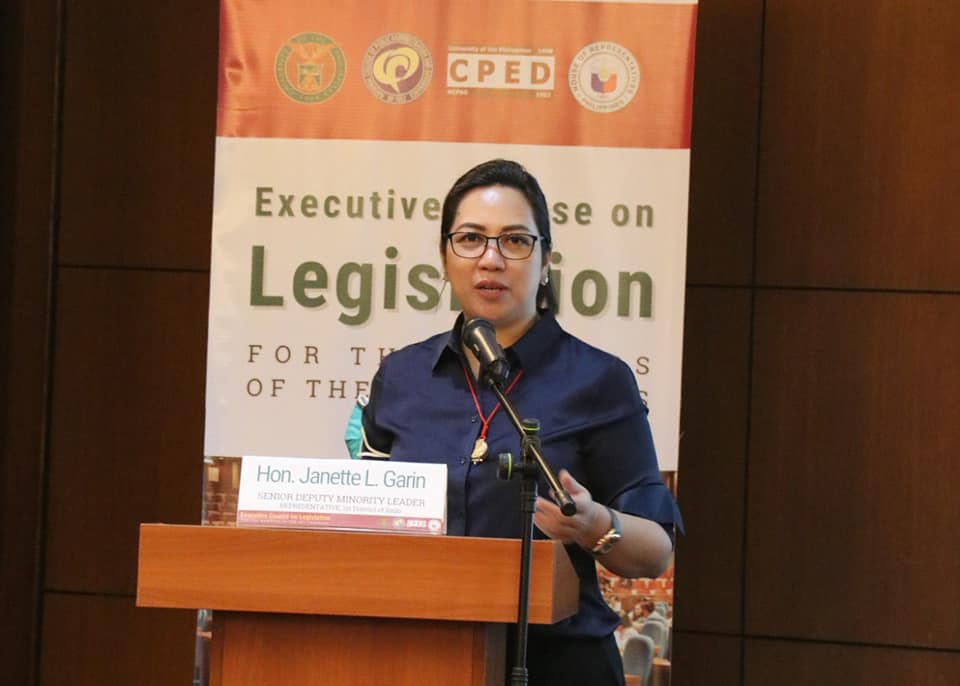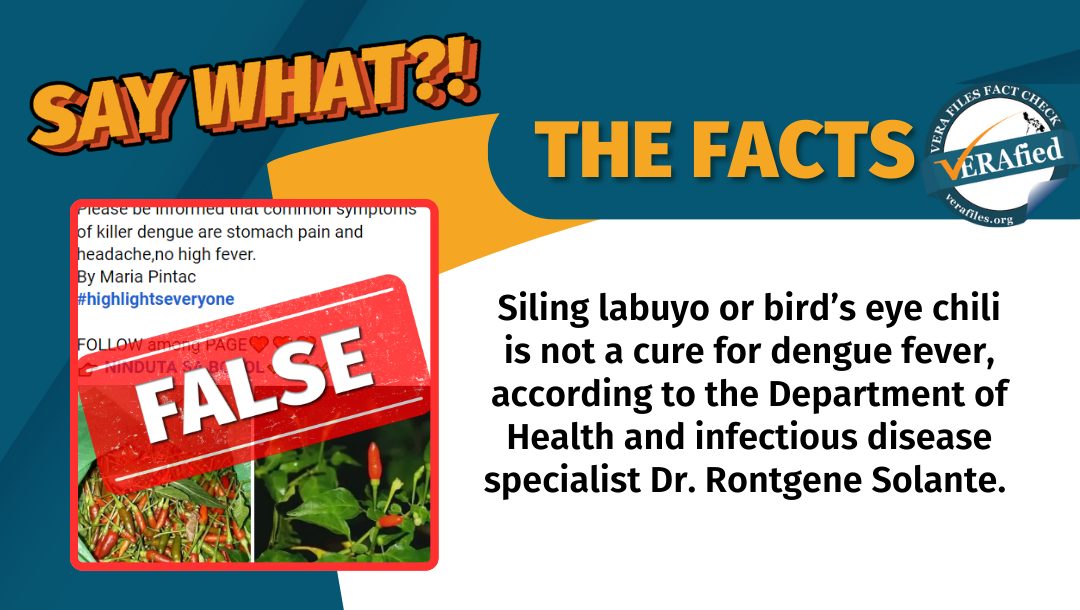The dengue epidemic the country is experiencing today had been foreseen as early as in January this year—but preventive measures were still not put in place.
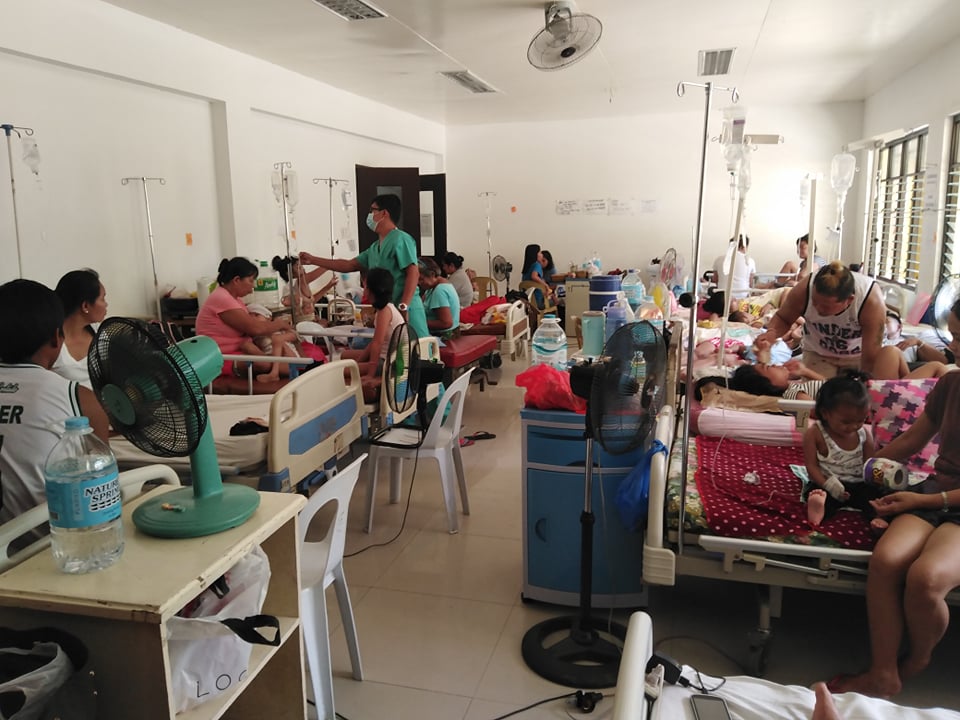
A room full of dengue patients at the Eastern Samar Provincial
Hospital (ESPH). Photo from the Philippine Information Agency
Dr. Nelson Soriano of the Cavite Provincial Epidemiology and Surveillance Unit (PESU) said it was able to determine that a dengue outbreak would happen in the province this year through an analysis of historical data.
“As early as January 14, nagpameeting po ako this year. Ininform ko sa kanila, tumataas ang dengue natin, hindi lamang measles (As early as January 14, I called for a meeting. I informed them of the increasing number of dengue cases, not just measles),” Soriano said in an interview with VERA Files.
He was pertaining to the meeting he conducted with dengue coordinators and disease surveillance officers of the province after noticing that dengue cases in Cavite, which in normal circumstances increases only during the rainy season, no longer follow the trend since 2009.
Data from the Cavite PESU show that dengue cases in the province from January to mid-October 2019 rose 353 percent year on year. Cavite has already recorded a total of 56 deaths from the 16,161 cases of dengue from January 1 to October 18. Through the same period last year, only 18 deaths were recorded from an aggregate 4,572 cases. This significant rise in the numbers prompted the provincial government of Cavite to declare a state of calamity on July 16.
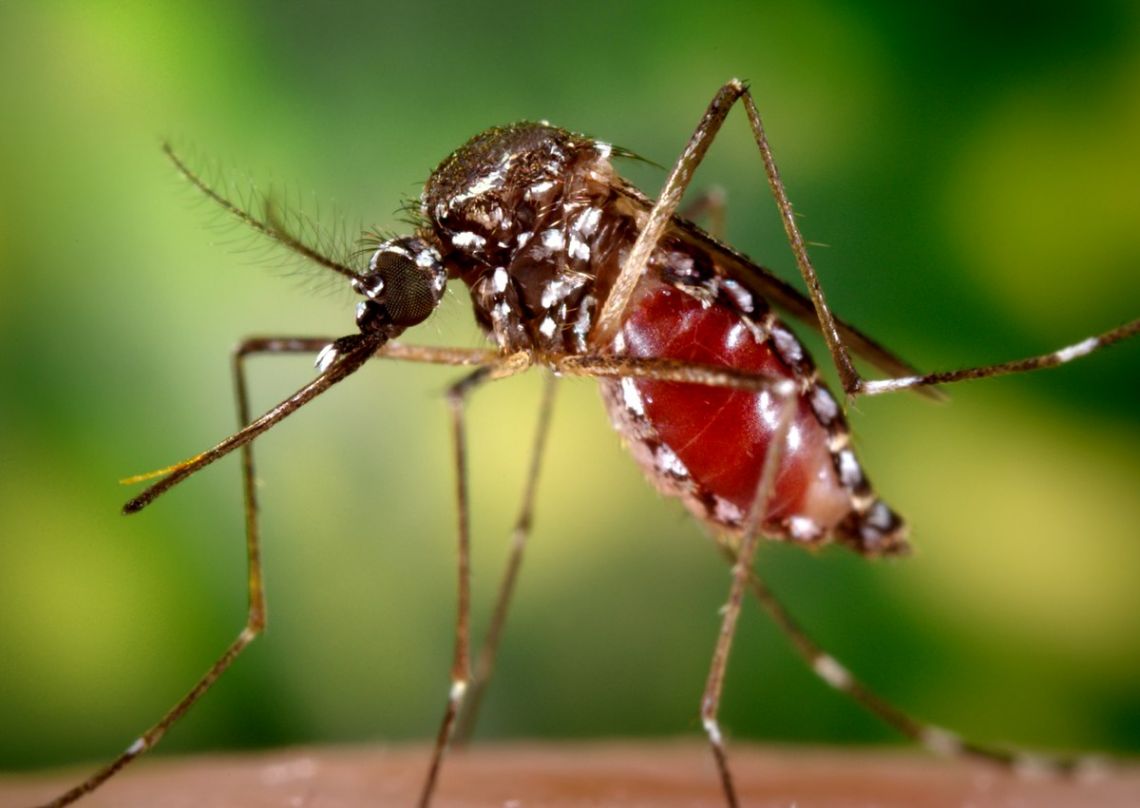
Female aedes aegypti, a dengue-carrying mosquito. Photo from
Wikimedia Commons
This year isn’t the first that Soriano was able to foresee, through data at his disposal, an outbreak in Cavite. In 2015, when Cavite last had a dengue epidemic, Soriano convened, as early as in January, the dengue coordinators, surveillance officers, and mayors from the municipalities and cities of the province to warn them of a possible outbreak should they fail to promptly undertake preventive measures. Unfortunately, early detection proved to be of no benefit. “Ayun, lo and behold (There, lo and behold),” Soriano could only sigh.
Water shortage, mosquito breeding places
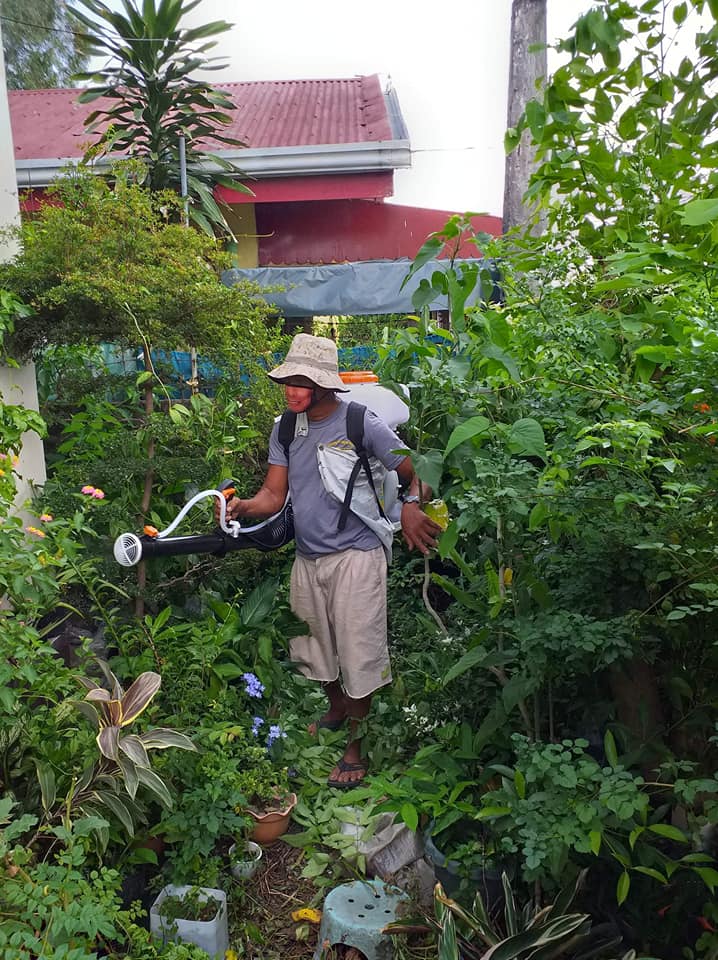
Dengue misting done at Barangay Anabu 1-B, Imus City, Cavite. Photo
from Barangay Anabu 1-B 2019 Official Facebook Page
Soriano credits the dengue outbreak to several factors, including the recent water crisis that affected most of Metro Manila and parts of Rizal and Cavite. The widespread water shortage, which started in March this year, caused several water supply interruptions—both on- and off- schedule—to thousands of households being serviced by water concessionaires Maynilad and Manila Water.
These interruptions drove people into storing as much water as they could through the use of pails, drums, and all sorts of containers—all of which served as potential breeding sites of dengue-carrying mosquitoes.
“Aba’y isipin niyo, ang habitat, ang tirahan [ng lamok] ay kasama nila sa loob ng bahay (Think about it; the habitat, the breeding sites of the mosquitoes are with them inside their houses),” Soriano said.
In Cavite, for instance, barangays in the cities of Bacoor, Imus, and Cavite, and in the municipalities of Kawit, Noveleta, and Rosario, were affected by the water shortage. Imus and Bacoor rank third and fourth, respectively, among places in Cavite with highest number of dengue cases from January 1 to October 18. Five barangays from the aforesaid municipalities and cities each recorded one death due to the dengue virus.
However, Mauricio Nerecina, councilor of Barangay Anabu IB which saw one death from three recorded cases of dengue, refused to cite inadequate water supply from Maynilad as the indirect cause. The water the residents store in anticipation of the interruptions, he said, are immediately consumed, thus ruling out any breeding of dengue carriers.
Instead, Nerecina pointed to stagnant water from canals of the barangay as the possible habitats of mosquitoes carrying the dengue virus. As for Anabu IB’s lone fatality, he posited that the dengue vector came from the construction site near the house of the infected child, where containers with water were being used for construction work.
After the death was recorded, the city government of Imus, through its city health office, started conducting seminars on dengue awareness and prevention in Anabu IB. The first community assembly on the topic took place on July 26. Nerecina acknowledged that the city government did not release any memorandum or ordinance on the matter.
“Habang ginagawa ito [community assembly], eh parang nakaburol pa ata ‘yung bata (While we were conducting [the community assembly], the child’s wake was ongoing),” Nerecina said.
Ten days prior, the local government of Cavite already put the whole province under a state of calamity and asked for the cooperation of its member municipalities and cities in combating the dengue outbreak.
The gap between the provincial government’s declaration of a state of calamity and the action of the city government is a reflection of the problem, Soriano pointed out.
“Kung may mamamatay lamang sa community, mababalitaan, tsaka sila kikilos, (It’s is only when someone dies in the community that action will be done),” the provincial health officer expressed his frustration.
Needed: pro-active not reactive attitude
Action, and not reaction, is what the National Disaster Risk Reduction and Management Council (NDRRMC), specifically its Health Cluster, targets.
Established through Executive Order No. 82 of the Aquino Administration, NDRRMC’s Health Cluster is led by the Department of Health (DOH) and is composed of different national government agencies, local government units, and members of the private sector and the academe who can help solve problems concerning public health—the dengue epidemic included.
“What we’re trying to do on the part of the NDRRMC, is call on our colleagues and counterparts in all levels of government na, lalo na ‘yung mga communities na wala pang instance ng dengue, to ensure na, huwag na mag-antay na magkaroon (What we’re trying to do on the part of the NDRRMC, is call on our colleagues and counterparts in all levels of government, specially those communities which still haven’t recorded any instance of dengue, to ensure that [they] won’t wait to have a dengue case before taking action),” Mark Timbal, spokesperson of the NDRRMC, said in an interview.
Members of the health cluster are tasked to follow and assist the DOH in carrying out programs and prescribed activities that would help in the prevention and mitigation of the spread of the dengue virus in the country.
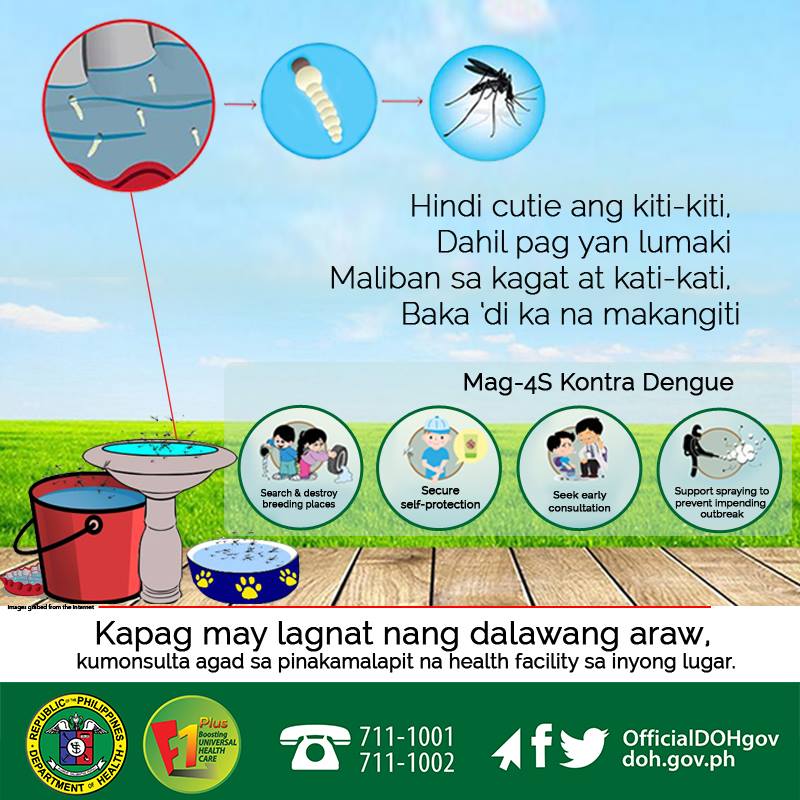
Sample publicity material of 4S Kontra Dengue from the DOH.
Nationwide, close to 179,000 more individuals were infected by the dengue virus in the first nine months of this year compared to the same period last year. The number of fatalities also followed this trend, with 1,302 deaths recorded from January 1 to September 28 this year. Last year, 806 deaths were recorded.
This growth in number is cause for concern, and resulted in DOH’s declaration of a National Dengue Epidemic on August 5. The declaration aims “to ensure a whole-of-nation approach addressing and halting the dengue epidemic,” which includes “localized interventions in priority areas,” “full community participation,” and “more vigorous disease-prevention campaigns” in coordination with local government units (LGUs), local disaster risk reduction and management councils (DRRMCs), and other government agencies concerned.
“They have to be proactive, in the sense that they have to prevent the disease from occurring in their localities, by doing the preventive campaigns DOH is doing,” Timbal said.
Unfortunately, not all member agencies and local government units are obliging. The order is not absolute for NDRRMC and its member agencies as well. While the members of the health cluster follow DOH’s recommendations as the agency in charge, the NDRRMC “does not limit” its member agencies, specifically the local government units, on their “creativity” in mitigating, if not altogether preventing, the spread of the dengue virus.
As an example of this “creativity,” Timbal cited a barangay in Quezon City, which released what was touted to be mosquito larvae-eating bullfrogs in its esteros as part of its anti-dengue campaign. Experts have since pointed out that those released were not bullfrogs, but invasive and poisonous cane toads which could bring more harm than good to residents of the said barangay.
Soriano blames it on the absence of a holistic approach which all stakeholders should take part in to be able to eradicate dengue throughout the country. He said not all health offices of member municipalities and cities obey the suggestions of the provincial government when it comes to vector mitigation and prevention.
“Hindi naman kami ang nagpapasweldo sa kanila, under sila ng mga mayor. Kahit sabihan mo, kung hindi naman ‘yon ang priority ng mayor, hindi naman ‘yon ang priority ng health [office] nila, eh ‘di hindi naman sila susunod (We are not the ones paying them, they are under the mayor. Even if you give them recommendations, if it isn’t the priority of the mayor, it isn’t the priority of their health office, and they won’t follow),” Soriano said.
Soriano called for the passage of formal legislation that would impose fines and penalties to those guilty of not actively participating in campaigns against the spread of the dengue virus. Meanwhile, he said, there is need to further strengthen existing vector management programs and educational and awareness campaigns on dengue, which include the enhanced 4S Strategy (Search and destroy, Seek early consultation, Self protection measures, and Say yes to fogging only during outbreaks) and the daily 4 o’clock habit.
Dengvaxia vaccine
Various groups have called for the use of the controversial Dengvaxia vaccine, the first and only licensed dengue vaccine. Doctors for Truth and Public Welfare (DTPW), led by former Health Secretary Esperanza Cabral, wants the Food and Drug Administration (FDA) to lift its ban on Dengvaxia and leave it to individuals to decide whether they would get the vaccine or not.
“The idea is to make it available so that people who want it, and who can benefit from it, can access it. Nobody is being forced to take the vaccine,” Cabral said in an interview.
Currently, there are wealthy individuals who go to countries where the Dengvaxia vaccine is given legally. This has been confirmed by DTPW.
“Many well-off families are hying off to nearby countries like Singapore to get their Dengvaxia shots. It has become an equity issue,” Cabral said.
The group acknowledges that lifting the ban on the vaccine now is not an immediate response to the outbreak the country is currently experiencing. One needs to receive three doses of the Dengvaxia, with intervals of six months in between shots, to complete the vaccination process.
This is aside from the amount of time that Sanofi Pasteur, manufacturer of Dengvaxia, would need to fulfill FDA’s post-approval documents and requirements, including the submission of its Risk Management Plans (RMP).
“If we had given the Dengvaxia, say, a year or two [ago], when we said that they should be giving it, we would have prevented this epidemic,” Cabral said.
The Dengvaxia was banned by FDA on February this year after questions were raised on its efficacy and safety. In 2016, the Aquino administration spent 3.5 billion pesos in its purchase of the vaccine for its mass vaccination program. Some 350,000 children were given all three doses, 400,000 received two doses, and 875,000 children received one dose of the vaccine.
In November 2017, however, Sanofi released a statement updating details on Dengvaxia, incorporating a new analysis of up to six years of clinical data. They found out that while the vaccine assures protection to seropositive individuals, or those who had been previously diagnosed with dengue, seronegative persons would be at risk of getting more severe dengue fever after they receive a dose of Dengvaxia.
Numerous complaints from parents of children who were able to receive shots of Dengvaxia from the previous administration’s mass vaccination program then surfaced. They argued that the death of their children was caused by Dengvaxia. Until now, there is no solid medical evidence proving their claim.
Even if Dengvaxia is brought back to the market for private consumption, however, there is the question of price; only individuals able to afford the vaccine can get it. Additionally, they must first be certain that the potential recipient is seropositive before getting any shot, a problem given the absence of a rapid diagnostic test to determine serostatus.
Cabral, however, points out that vaccinating those who are currently diagnosed with dengue will already bear significant results in the future.
“So like the Department of Health is saying, there are already 170,000 people who have been diagnosed with dengue. These are precisely the people, because they have already been diagnosed with dengue, that they should be vaccinating, so that they don’t get another dengue infection in the future, and so that the incidence of dengue is reduced,” Cabral said.
Disabusing Dengvaxia scare
Bringing back the Dengvaxia vaccine is one thing, but disabusing the people of their fear of vaccination caused by the Dengvaxia scare is another. Despite this, Cabral remains optimistic. “I am still hopeful that the people in government, the people in the DOH, are level-headed, and will recognize the benefits of bringing Dengvaxia and not depriving people who may benefit from it.”
Currently, the European Medicines Agency of the European Union and the United States Food and Drug Administration have already approved and endorsed the use of Dengvaxia.
The World Health Organization reiterated in its September 2018 position paper that Dengvaxia should be given only if the following conditions are satisfied:
- use of the vaccine should be considered only in areas where a high proportion (preferably at least 70 percent) of the community has already been exposed to the virus;
- the vaccine should be provided to people nine years of age and above; and
- people being vaccinated should receive three doses.

